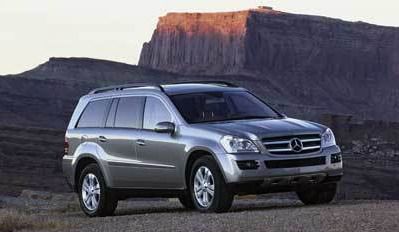Mercedes-Benz – the well-known automotive company that pioneered ABS anti-lock brakes, traction and ESP stability control – has further confirmation from the Insurance Institute for Highway Safety (IIHS) that the stability control system originally developed by Mercedes-Benz dramatically reduces accidents.
Now being used by other manufacturers, stability control systems reduce the likelihood of all fatal accidents by 43 percent and fatal single-vehicle crashes by 56 percent, according to the most recent IIHS accident study! And, when the IIHS recently updated the results of their 2004 accident study, they found that stability control provides even more life-saving benefits for sport utility vehicles.
Although the safety system provides significant benefits to both cars and SUVs, sport utility vehicles with stability control are reported to have 80 percent fewer rollovers than vehicles without the system. The study also concluded that the risk of all types of single-vehicle crashes in an SUV was reduced by 49 percent.
Mercedes-Benz Makes Cars Safer
After bringing the industry’s first ABS anti-lock brakes and traction control systems to consumers in the 1980s, Mercedes-Benz invented ESP stability control and introduced it in 1995. The new safety system made its debut on the 1996 S-Class line and became standard equipment on most Mercedes-Benz models by the 2000 model year and is standard on all Mercedes-Benz models today.
How Does Stability Control Work?
ESP can sense impending loss of control at the front or rear end. The system works in a split second by braking individual wheels and/or reducing excess engine power, something that even the most skilled driver cannot do. ESP can be compared to having four individual brake pedals, one for each wheel, with a powerful computer to determine which pedal should be applied when and for how long.
The Mercedes-Benz ESP system helps drivers maintain stability, especially on slippery roads, by helping to prevent oversteer (rear-end “fishtailing”) or understeer (front-end “plowing”). Even the “ESP” abbreviation helps underscore the system’s benefits – it works invisibly, seemingly intuitively, to help keep the car going where the driver points it, under driving circumstances that might otherwise lead to loss of control and a possible accident without the system.
Using electronic sensors and lightening-fast computer logic, the system constantly monitors a vehicle’s actual path against its intended path. If there’s any difference between what the driver is “asking” (primarily through the steering wheel) and what the vehicle is doing, the system works in a split-second by braking individual wheels and/or reducing excess engine power, even before the driver may sense any changes.
ESP uses the angle of the steering wheel and the speed of the four tires to calculate the path being steered, and it gets electronic signals about lateral “g” and vehicle “yaw rate” to measure what the car is actually doing. (Yaw can be demonstrated by rotating a small model car on a toothpick stuck down through its roof; engineers describe the vehicle as rotating around its vertical center axis.)
ESP measures any tendency toward understeer (when a car plows over its front wheels) or oversteer (when the rear wheels try to swing around, causing the car to “fishtail”). Whenever it senses understeer in a turn, ESP increases brake pressure to the inside rear wheel. With an oversteer tendency, it increases brake pressure to the outside front wheel. For example, if the rear wheels begin sliding to the left so the vehicle is yawing clockwise, ESP applies the left front brake to counter the yaw and stabilize the vehicle.
Unlike traction control alone, ESP is effective during acceleration, braking and coasting. The system enhances driver control and helps maintain directional stability in turns as well as when driving straight-ahead.
As a joint project of Mercedes-Benz and Bosch, the development and testing of the ESP system had been underway for several years before its introduction in model year 1996.

